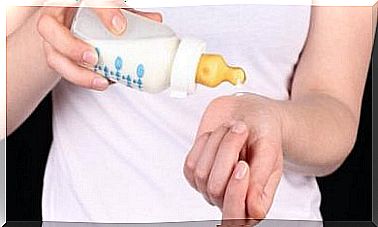Self-harming Behavior In Teenagers

If you often notice that your child has cuts, bruises, burns or wounds, it is extremely important that you pay attention. Self-harming behavior in teens is a quiet way for teens to scream for help.
Until recently, the Diagnostic and Statistical Manual of Mental Disorders counted this behavior as a symptom of a mental disorder. But today it is treated as something separate from mental illness.
Self-harming behavior in teens is a problem that has increased at an alarming rate. In the last 30 years, cases have multiplied worldwide.
The behavior usually occurs between 12 and 16 years of age. At the same time, up to 63% of these teenagers continue to injure themselves up to the age of 17. This clearly shows that a large number of young people are stuck in the behavior.
Girls usually choose injuries where they can see blood, such as scratches and cuts. Boys usually choose bruises and burns instead. The remarkable thing is that although women are more likely to engage in this type of behavior , the prevalence among boys is growing much faster.
22% of young people in Europe have injured themselves without suicide at least once in their lives. This according to a study conducted by the Department of Clinical Psychology and Health at the University of Madrid.
In addition, the researchers concluded that 8% exhibited self-harming behavior repeatedly.
Self-Harm Behavior in Teens: Why Do They Do It?
One way to explain this is that self-harming behavior is like a drug. It is a kind of painkiller that is stronger than any other product available to these young people. The self-harming behavior “helps” them to regulate their emotions.
Sometimes they feel fear, rage, sadness and anger repeatedly and do not know how to deal with them. Therefore, they resort to physical pain to forget the emotional pain. It is a kind of avoidant behavior that relieves tension and alleviates negative emotions.

It is important to point out that these actions are not impulsive in any way. On the contrary, in fact. Teenagers plan them, wait a while when they are alone and then perform their little ritual with knives, cigarettes, lighters and sharp objects.
As with other addictions, adolescents experience a false sense of peace and tranquility immediately after harming themselves. It’s like taking a dose of some fast-acting drug. The problem arises when the anxiety returns a few minutes later – along with feelings of shame and guilt.
Even if these teenagers do not try to kill themselves , the self-harming behavior increases the risk of possible suicide attempts in the future. Parental involvement is extremely important in preventing adolescent self-harming behavior.
Is there a solution?
Self-harming behavior in teenagers is a disorder that absolutely requires psychiatric treatment by, for example, a psychologist. Teenagers need to understand that self-harming behavior does nothing to solve their problems. Rather, it gives rise to more problems in their lives.
It is important for caregivers and parents to get to the root of the problem – in other words, what causes a child’s depression, anxiety, eating disorder, etc.
Many therapists focus their efforts on teaching techniques for emotional self-control. These can include intensive physical training, showers with cold water, the young people being allowed to shout or hit pillows, etc.
Organizations such as the International Society for the Study of Self-Injury (ISSS) offer help and information. They work with therapy, guidance and resources – both for patients and their families.
Contact student health or directly to BUP if you have a teenager in the family who is harming himself. There are also other, independent organizations that you can turn to anonymously for information and help.
It is important to understand that self-harming behavior in teens is a strong cry for help and attention. Asking them why they do it will only give them more anxiety. What these teens need is understanding and empathy.
A trend with many followers
Self-harming behaviors have become a trend and you can even find tips and information on the internet on how to do it.
On Instagram, there are photos and videos from teenagers who proudly show off their injuries so that everyone can see, without filters.

Many teens start self-harming behaviors because they are curious and like a fun thing. What they are looking for is a little more adrenaline, or to meet a certain challenge to be able to post some viral hashtag on their social media.
However, we must never sweep away any signs of this. In most cases, self-harming behavior is not an indication of any lasting mental damage, but it is a sign of low self-esteem, an inability to have healthy relationships and a low emotional intelligence.
The impact of self-harming behavior during adolescence has been so significant that a new television series, Sharp Objects, openly addresses the issue. This type of resource, as well as professional intervention, can help your child find a solution.
[featured-post url = ”https://attvaramamma.se/barn/vad-bor-du-kanna-till/tips-for-att-uppfostra-ditt-barn/sa-gor-du-for-att-komma -closer-your-toning / ”









